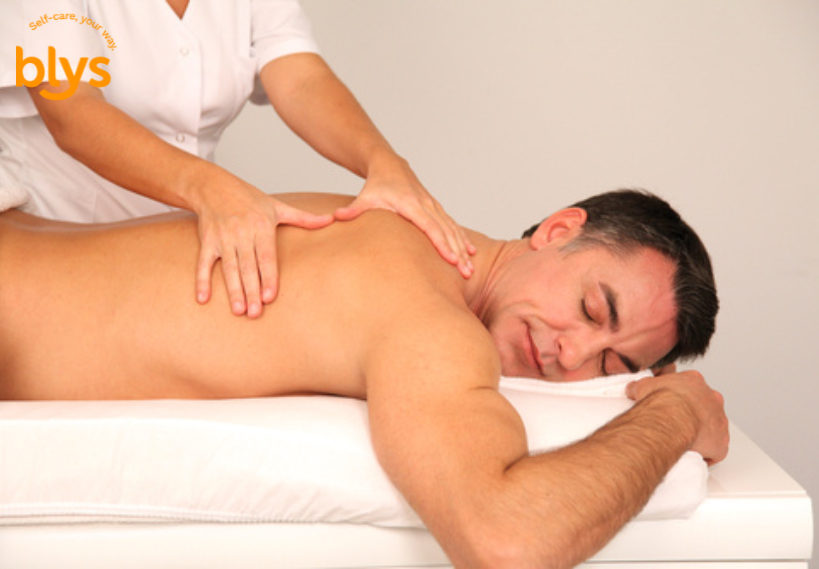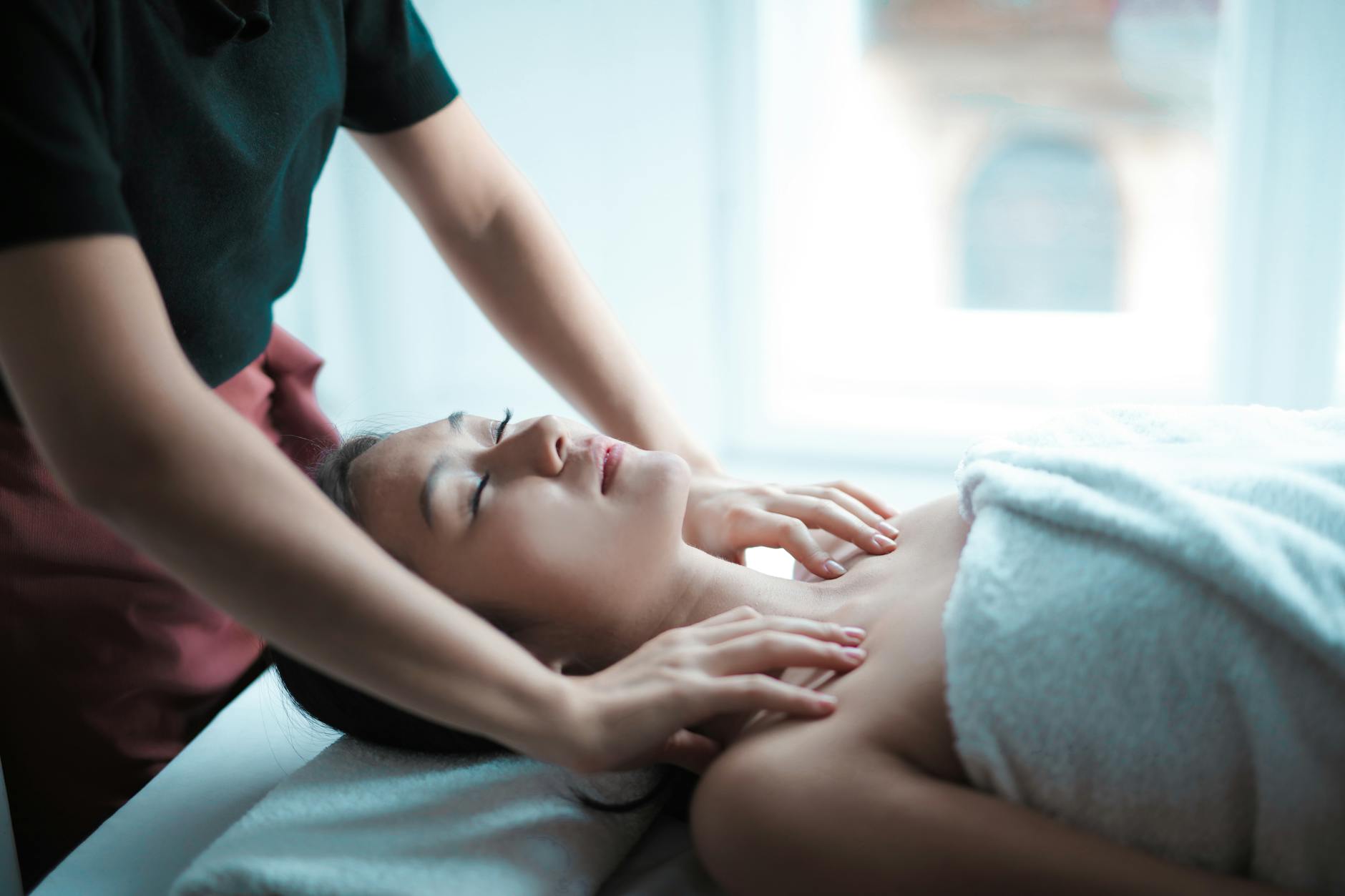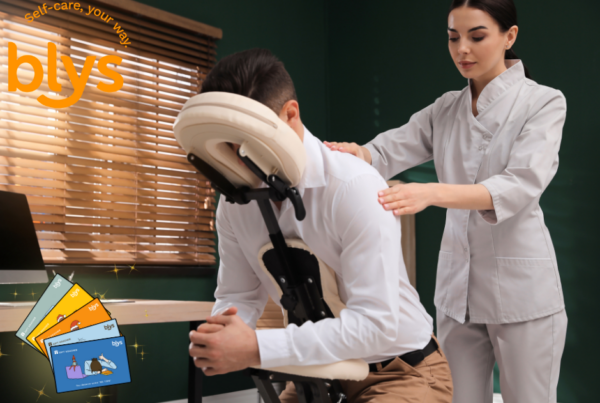 As we age, it’s normal for our bodies to go through changes. Joints may feel stiffer, circulation can slow down, and everyday movements often come with more effort or discomfort. Chronic aches, postural changes, and reduced flexibility are just a few of the challenges that can impact quality of life. These physical changes don’t just affect comfort—they can also influence mood, sleep, and independence.
As we age, it’s normal for our bodies to go through changes. Joints may feel stiffer, circulation can slow down, and everyday movements often come with more effort or discomfort. Chronic aches, postural changes, and reduced flexibility are just a few of the challenges that can impact quality of life. These physical changes don’t just affect comfort—they can also influence mood, sleep, and independence.
For many older adults, regular massage offers gentle, targeted relief. It’s a non-invasive way to ease tension, improve blood flow, and support joint movement. And with the growing demand for in-home services, seniors no longer need to leave the house to experience these benefits.
In-home massage brings professional care directly to them, offering comfort, convenience, and peace of mind.
What Is Geriatric Massage and Who Is It For?
This type of massage is designed to meet the physical and emotional needs of older adults. It prioritises safety, comfort, and gentle care, offering support for common age-related conditions and limited mobility.
A Gentle, Specialised Approach
Geriatric massage uses lighter pressure and slower techniques to suit the ageing body: reduced muscle tone, fragile bones, and sensitive skin all call for a careful touch. Sessions may include gentle strokes, soft kneading, and passive stretching: all performed at a pace that feels comfortable and non-invasive.
Positioning is also highly customised: clients may be seated, partially reclined, or supported with pillows and bolsters to reduce strain on joints or the back. The therapist adapts every aspect of the session to fit the client’s current health status and energy levels.
Unlike general massage, which may focus on muscle tension or sports recovery, geriatric massage aims to promote circulation, support joint movement, and reduce discomfort without overwhelming the body. It’s ideal for seniors who need a restorative experience without the intensity of deep tissue work.
Common Conditions Supported
Many older adults live with chronic conditions that can benefit from targeted massage care. These include:
- Arthritis: easing inflammation and joint stiffness.
- Osteoporosis: applying only light, careful touch to avoid stress on bones.
- Post-surgery recovery: promoting relaxation and supporting gentle healing.
- Circulatory issues: improving blood flow to the limbs and extremities.
Massage can also assist seniors who use mobility aids like walkers or wheelchairs: enhancing range of motion, reducing muscle fatigue, and offering emotional comfort through positive touch.
For more insights into how massage supports ageing bodies, check out our full guide on the benefits of massage for seniors.
Proven Benefits of Massage for Ageing Bodies
As we grow older, even small changes to daily comfort can make a big difference. Geriatric massage offers several evidence-based benefits that go beyond simple relaxation: supporting circulation, easing physical discomfort, and improving overall quality of life.
Improved Blood Circulation
One of the most direct physical benefits of massage is its ability to boost blood flow: this is especially valuable for seniors who may be less active or have reduced mobility. Gentle pressure helps stimulate the circulatory system, supporting better nutrient delivery, waste removal, and healing throughout the body.
A review on massage and circulation explains how even light, repetitive strokes can activate superficial circulation: promoting skin health, reducing cold limbs, and supporting tissue repair after injury or surgery.
Pain Management and Joint Flexibility
Joint stiffness and muscle aches are common with age: especially in the knees, hips, and shoulders. Geriatric massage can help ease this discomfort by improving soft tissue flexibility and reducing muscle tightness around affected joints.
In a clinical study of elderly patients with knee osteoarthritis, participants who received regular massage experienced improved mobility and reduced pain. With consistent sessions, massage may also help manage postural issues and tension built up from limited movement or previous injuries.
Mental and Emotional Wellbeing
Touch plays a powerful role in emotional regulation: especially for seniors who may be experiencing loneliness or social isolation. Massage can promote a calming, grounded state—supporting sleep, lifting mood, and reducing anxiety.
According to a study published in Complementary Therapies in Clinical Practice, older adults who received massage therapy reported feeling more relaxed, less anxious, and emotionally supported after their sessions.
Together, these physical and emotional benefits show how massage can support the ageing body in meaningful ways. But like any therapy, it’s important to consider safety too, especially when health conditions are involved.
Experience the benefits of gentle massage, right at home. Book a mobile aged care massage with Blys today.
Safety Considerations and When to Avoid Massage
While geriatric massage is generally safe and beneficial, it’s essential to approach it with care. Older adults often have complex health histories, which means massage should always be tailored to the individual. Certain medical conditions may require extra caution—or even a GP’s approval—before starting sessions.
When to Check With a GP First
Before booking a massage, it’s important to speak with a GP or healthcare provider if any of the following apply:
- Deep vein thrombosis (DVT): Massage could dislodge a clot and lead to serious complications.
- Recent surgery or injury: Massage near surgical sites or healing wounds should only be done under guidance.
- Skin conditions: Fragile skin, open sores, or rashes may require the area to be avoided altogether.
- Chronic conditions: Those with heart disease, diabetes, or advanced osteoporosis should be reviewed individually to ensure massage is safe.
Having professional oversight helps avoid risks while still offering the benefits of touch therapy. A quick consultation with a GP adds peace of mind and ensures a safer experience.
Therapist Training Matters
Seniors need more than just a massage—they need care that respects their current abilities and health status. That’s why it’s crucial to work with trained professionals who understand the nuances of elderly massage therapy. Techniques, pressure, and positioning must be adapted appropriately.
With Blys, all practitioners offering aged care services are fully qualified, insured, and carefully vetted. This ensures clients and their families receive support from someone experienced, professional, and trustworthy.
You can also explore how aged care massage helps improve quality of life in our detailed blog on massage benefits for seniors in aged care.
What to Expect From a Mobile Geriatric Massage Session
One of the main benefits of in-home massage for elderly clients is the comfort of familiar surroundings. There’s no need to travel, wait in clinic rooms, or worry about accessibility. Instead, a qualified Blys therapist brings everything needed for a safe and relaxing experience—right to the door.
Comfort Comes First
Every session begins with comfort in mind: from the setup to the positioning. Therapists bring professional-grade equipment and work with each client’s physical needs. Comfort features may include:
- Adjustable tables that cater to various mobility levels.
- Pillows and bolsters to support joints and relieve pressure.
- Seated or semi-reclined positioning for those unable to lie flat.
The space is kept quiet and calming, helping the client relax in a familiar environment without overstimulation or stress.
Customised Techniques
Geriatric massage doesn’t follow a one-size-fits-all routine. Instead, therapists use gentle strokes, soft kneading, light compression, and passive stretching: depending on what the client can tolerate and benefit from. Focus areas often include the shoulders, hands, lower back, and legs, especially areas affected by arthritis or inactivity.
Therapists check in regularly throughout the session to adjust pressure or pace, making sure the person always feels safe and supported.
Family or Caregiver Presence
If preferred, a family member or caregiver can be present during the session for added reassurance. This is especially helpful for clients with memory challenges or mobility limitations.
Blys currently offers mobile geriatric massage services in major cities including Alabama, Arkansas, California, and Georgia and more.
How to Book In-Home Massage for Elderly With Blys
Booking a mobile aged care massage with Blys is simple and stress-free. Whether it’s for yourself or a loved one, the process takes just a few minutes—and the rest is taken care of for you.
Step-by-step guide:
- Visit the Geriatric Massage page.
- Choose the location, date, and preferred time that works best.
- Select a one-time or recurring session depending on your needs.
- Blys matches you with a qualified, vetted therapist trained in aged care massage.
- Your therapist arrives fully equipped—massage table, clean linens, oils, and all.
All bookings are managed online, and you’ll receive updates and reminders along the way. You can also add notes about specific needs or conditions during the booking process.
Looking for a trusted way to support your loved one’s mobility and comfort? Book a geriatric massage now.
Comfort and Care That Comes to You
Geriatric massage offers more than just relief from aches and pains. It provides ongoing support for both the body and mind. From easing stiff joints and improving circulation to promoting emotional wellbeing, this gentle therapy helps make daily life more manageable and comfortable.
What makes it even more valuable is the flexibility and reassurance of mobile care. With Blys, seniors receive safe, professional massage therapy in the comfort of their own home. There is no need to travel or deal with clinic wait times—just personalised support delivered with care.
Whether you’re supporting a parent, caring for a loved one, or planning ahead for your own needs, mobile massage is a thoughtful way to prioritise wellbeing. A simple session can make a meaningful difference in how someone feels physically, mentally, and emotionally.





